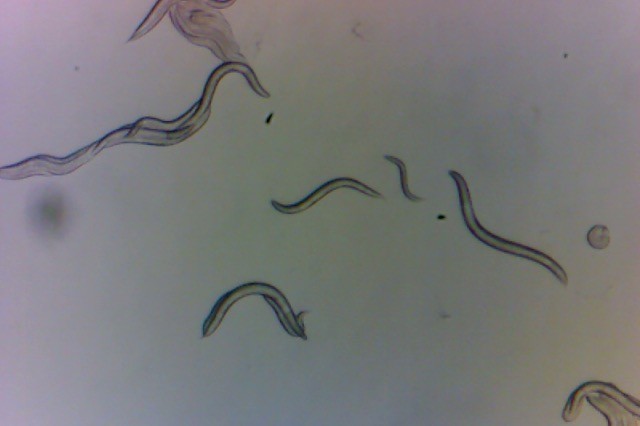A certain kind of worm that researchers gathered around the site of the melted-down Chornobyl nuclear power plant has shown a remarkable resilience to nuclear radiation and seems to be largely unaffected living in the most radioactive place on Earth.

A study released last week in The Proceedings of the National Academy of Sciences, and led by researchers at New York University (NYU), found that microscopic worms known as nematodes have a high capacity to withstand damage to its DNA — a finding that could help inform cancer research.
DNA and gene changes (also known as mutations) that affect cell growth are what cause cancer. For instance, smoking cigarettes or being exposed to too much UV radiation from the sun can cause DNA damage that can help cancer form and spread.
If these little nematodes can withstand Chornobyl-level radiation, perhaps one day they can be used to understand how to protect DNA against carcinogens.
“Chornobyl was a tragedy of incomprehensible scale, but we still don’t have a great grasp on the effects of the disaster on local populations,” said Sophia Tintori, a postdoctoral associate at NYU and the first author of the study, according to a press release from NYU.
Plants and animals continue to thrive in the Chornobyl exclusion zone, despite the high level of radiation that still plagues the restricted area around the melted-down facility. Hundreds of dogs inhabit the zone, though research has found that they appear physically and genetically different than their counterparts elsewhere.

Tintori and her colleagues set out to do similar research. But instead of sequencing the genomes of dogs, they investigated a species of nematodes called Oscheius tipulae.
“These worms live everywhere, and they live quickly, so they go through dozens of generations of evolution while a typical vertebrate is still putting on its shoes,” said Matthew Rockman, a professor of biology at NYU and the study’s senior author.
The team collected 15 O. tipulae worms around the exclusion zone, measuring the level of radiation in the locations where they were found using a Geiger counter. The worms came from locations that had low levels of radiation, on par with New York City, and high levels, on par with outer space.
They then sequenced the genomes of the 15 Chornobyl worms and compared to them to five nematodes that came from other parts of the world.
The researchers were surprised when they learned that they couldn’t identify a signature of radiation damage in the genomes of the Chornobyl worms.
“This doesn’t mean that Chornobyl is safe — it more likely means that nematodes are really resilient animals and can withstand extreme conditions,” noted Tintori.
“We also don’t know how long each of the worms we collected was in the zone, so we can’t be sure exactly what level of exposure each worm and its ancestors received over the past four decades.”
The scientists then wondered if the reason for the apparent lack of change to these worms’ genes was because they evolved some kind of resilience or were exceptional at repairing their damaged DNA.
The team bred populations of worms from their 20 originals and exposed them to different carcinogens to see how well they could withstand DNA damage. The findings revealed that the Chornobyl worms weren’t necessarily more tolerant to radiation, and that the radioactive landscape hadn’t forced them to evolve.
“Now that we know which strains of O. tipulae are more sensitive or more tolerant to DNA damage, we can use these strains to study why different individuals are more likely than others to suffer the effects of carcinogens,” said Tintori.
“Thinking about how individuals respond differently to DNA-damaging agents in the environment is something that will help us have a clear vision of our own risk factors,” she added.









Comments